E-rate Sparks Low-Cost Connectivity, Better Digital Learning
EdTech Magazine
OCTOBER 2, 2017
By EdTech Staff Once schools receive E-rate funding, innovating learning can develop.
This site uses cookies to improve your experience. To help us insure we adhere to various privacy regulations, please select your country/region of residence. If you do not select a country, we will assume you are from the United States. Select your Cookie Settings or view our Privacy Policy and Terms of Use.
Cookies and similar technologies are used on this website for proper function of the website, for tracking performance analytics and for marketing purposes. We and some of our third-party providers may use cookie data for various purposes. Please review the cookie settings below and choose your preference.
Used for the proper function of the website
Used for monitoring website traffic and interactions
Cookies and similar technologies are used on this website for proper function of the website, for tracking performance analytics and for marketing purposes. We and some of our third-party providers may use cookie data for various purposes. Please review the cookie settings below and choose your preference.

EdTech Magazine
OCTOBER 2, 2017
By EdTech Staff Once schools receive E-rate funding, innovating learning can develop.

eSchool News
OCTOBER 17, 2024
In July, the Federal Communications Commission (FCC) approved the use of E-rate funds to loan Wi-Fi hotspots that support students, school staff, and library patrons without internet access. For an update on the 2025 E-rate, register for an eSchool News webinar featuring expert insight. This should be our baseline.
This site is protected by reCAPTCHA and the Google Privacy Policy and Terms of Service apply.

Digital Promise
JANUARY 8, 2019
Entrepreneurs are building on this knowledge to build breakthrough innovations that improve learning. Still, huge gaps exist in educational outcomes, high school graduation rates, college readiness and workforce advancements based on race, class, and geography. These present as follows: 1. school and library to the internet.

Digital Promise
APRIL 29, 2019
Technology isn’t the only tool we can use to create equitable learning environments, but there are a few ways it can assist in that mission. Students can access learning materials outside of school. Students and educators have more tools to create a learning environment that fosters personalized learning.

EdTech Magazine
FEBRUARY 12, 2019
The nonprofit broadband advocacy group found nearly 45 million students enjoy in-school access to high-speed internet connectivity, up from 39 million in 2017. According to the group, 98 percent of public schools have next-generation fiber infrastructure, and 96 percent have enough connectivity to support online and digital learning. .

EdTech Magazine
DECEMBER 26, 2018
School Districts Take Advantage of E-Rate’s Category One Funding. Once its existing WAN provider wanted to charge significantly more for the same bandwidth speed, Midlothian Independent School District administrators began shopping for a faster, more affordable network — and they got one this summer with the help of E-rate fund s.

eSchool News
SEPTEMBER 27, 2022
Every year, schools and libraries have access to billions of dollars of funding through the FCC’s E-rate program. In this post I’ll break down the importance of E-rate, how it works, and the types of technologies it makes available that are crucial to education. The importance of E-rate.

Digital Promise
JANUARY 13, 2015
One of those programs is the Universal Service Program for Schools and Libraries, better known as E-rate. E-rate helps schools and libraries get affordable Internet access by discounting the cost of service based on the school’s location – urban or rural – and the percentage of low-income students served.

Neo LMS
JANUARY 4, 2022
For students, the ability to access their learning materials at any given time is a significant benefit. Edtech tools like learning management systems (LMSs) include all materials in a single place. The future of e-learning takes the pulse of the community to create a better learning experience.

A Principal's Reflections
NOVEMBER 9, 2014
Back in 2009 when we began to transform teaching and learning at New Milford High School we were extremely fortunate at the time to have wireless Internet access throughout the school. Access to the Internet allowed us and our students to harness and leverage thousands of free tools to support teaching and learning as described above.
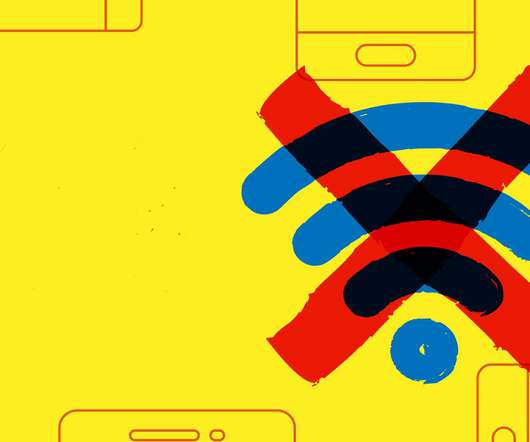
Edsurge
MARCH 20, 2020
There's a big giant access issue, both in terms of what happens when there’s no internet and then also what happens when you don’t have a device that can go on the internet,” says Beth Holland, the digital equity and rural project director at the Consortium for School Networking, an industry group for school tech directors.
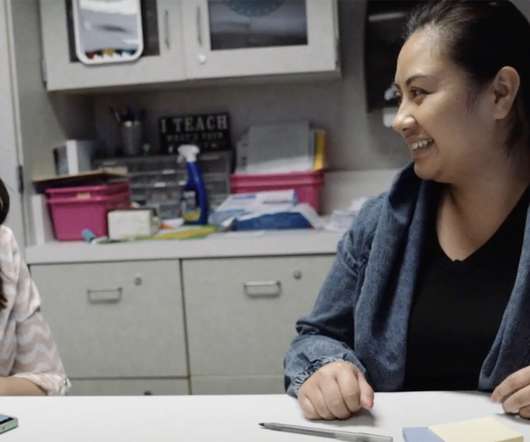
Digital Promise
JULY 20, 2020
We’ve found in our national survey, Learning in the 21st Century: How the American Public, Parents, and Teachers View Education Priorities and How to Achieve Them , that only half of teachers rely on research to inform their practice. What do you think could be the reason they rate it lower than peers and instinct?

Edsurge
OCTOBER 2, 2018
As America’s classrooms become increasingly connected, the nation inches ever closer to reaching a major milestone: 100 percent of schools with high-speed internet access, defined as at least 100 kbps (or 100 thousand bits per second) per student. At that speed, Marwell said, “digital learning” takes on a whole new meaning.

eSchool News
OCTOBER 24, 2022
The federal E-rate program continues to provide expanded access to technology, including edtech tools, digital learning resources, and high-speed internet access, to schools, according to an annual report that takes stock of the program’s progress.

Education Superhighway
FEBRUARY 19, 2019
She is the current Digital Access Coordinator for the Learning Technology Center of Illinois (LTC) and an Illinois State E-rate Coordinator. She has worked in educational technology for nearly two decades, empowering educators to integrate digital learning in the classroom.
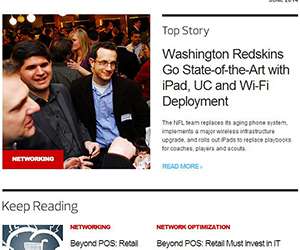
EdTech Magazine
MAY 5, 2020
For school districts implementing e-learning plans, a key concern is ensuring equity and access to learning materials for all students. Some students may not have access to the devices needed to complete e-learning activities, while others may not be able to connect to the internet from home.

EdTech Magazine
OCTOBER 3, 2018
In education, software programs lend a helping hand just about everywhere, from device management to digital learning. GoGuardian Admin offers adjustable, policy-based filtering that blocks prohibited sites and alerts administrators when students attempt to access inappropriate content, even on a permitted site.

Education Superhighway
OCTOBER 31, 2017
In 2014, the Federal Communications Commission modernized the E-rate program with the objective of closing the K-12 digital divide within five years. As a result, 35 million more students have been connected to digital learning and educational opportunity. Why has E-rate modernization worked so well?
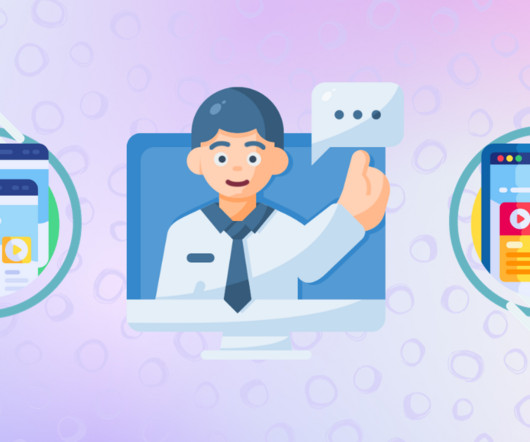
Hapara
OCTOBER 19, 2023
Listen to an audio version of this post: [link] A digital learning platform is designed to make teaching easier by allowing educators to manage and individualize lessons and evaluate students. To get the maximum out of any digital learning platform your school uses, your operators need to be well-trained and skilled.

Digital Promise
MAY 27, 2020
With digital learning likely to stretch into the fall due to COVID-19, how can we ensure every student has equitable access to powerful learning opportunities? The crisis has shone a harsh light on the digital divide in the United States, surfacing thoughtful debate and long-overdue discussion around the equity gap.

EdTech Magazine
MAY 12, 2020
For school districts implementing e-learning plans, a key concern is ensuring equity and access to learning materials for all students. Some students may not have access to the devices needed to complete e-learning activities, while others may not be able to connect to the internet from home.

EdTech Magazine
MAY 9, 2020
For school districts implementing e-learning plans, a key concern is ensuring equity and access to learning materials for all students. Some students may not have access to the devices needed to complete e-learning activities, while others may not be able to connect to the internet from home.

EdTech Magazine
MAY 7, 2020
For school districts implementing e-learning plans, a key concern is ensuring equity and access to learning materials for all students. Some students may not have access to the devices needed to complete e-learning activities, while others may not be able to connect to the internet from home.

EdTech Magazine
MAY 7, 2020
For school districts implementing e-learning plans, a key concern is ensuring equity and access to learning materials for all students. Some students may not have access to the devices needed to complete e-learning activities, while others may not be able to connect to the internet from home.

EdTech Magazine
MAY 6, 2020
For school districts implementing e-learning plans, a key concern is ensuring equity and access to learning materials for all students. Some students may not have access to the devices needed to complete e-learning activities, while others may not be able to connect to the internet from home.

EdTech Magazine
MAY 6, 2020
For school districts implementing e-learning plans, a key concern is ensuring equity and access to learning materials for all students. Some students may not have access to the devices needed to complete e-learning activities, while others may not be able to connect to the internet from home.

Doug Levin
FEBRUARY 2, 2016
Be explicit with districts about expectations for access to technology in schools and classrooms. It should not be controversial in 2016 that there is a baseline expectation of access to technology in schools, just as there are baseline expectations for access to textbooks and desks.
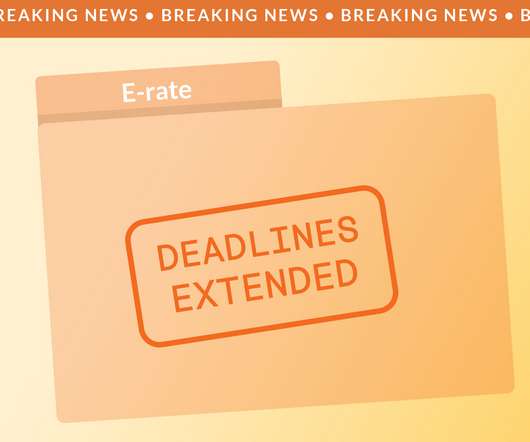
Education Superhighway
APRIL 1, 2020
On April 1, 2020, the FCC announced extensions of several key E-rate deadlines to provide relief to program participants affected by the COVID-19 outbreak. These extensions have been put in place to alleviate administrative burdens while most public schools have closed and are transitioning to remote learning.

Edsurge
SEPTEMBER 3, 2021
These one-time gifts from billionaires and multinational corporations are welcomed by most schools, but they are not enough to close gaps in access to learning technologies nor ultimately a sustainable financing solution for technology infrastructure. More than Devices The “digital divide” was not quite a household term two years ago.

Education Superhighway
JUNE 20, 2018
Last week, the Washington state legislature appropriated $900,000 to further leverage funding from the federal E-rate program, which will bring greater connectivity to schools across the state and make available K-12 digital learning access grants.
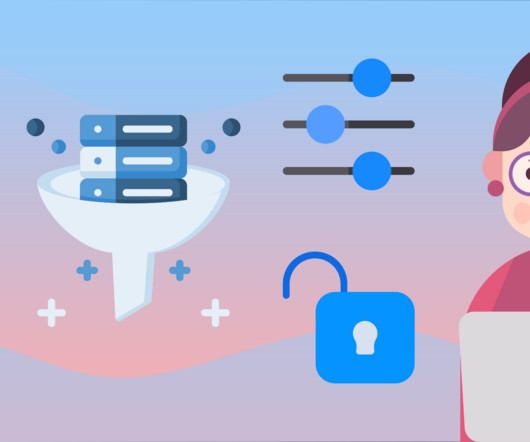
Hapara
MARCH 13, 2023
Listen to an audio version of this post: [link] A digital learning environment offers students all kinds of options for research, class projects, collaboration, activities and assessments. So how do you manage web filtering so that it protects students but doesn’t restrict learning?

Edsurge
JANUARY 7, 2019
In the survey, school district representatives also answered questions about E-rate, broadband connectivity, cloud computing and data interoperability. In the survey, just over 3 percent of respondents said their school buses have Wi-Fi, but another 16 percent said they would consider it if it were E-rate eligible.
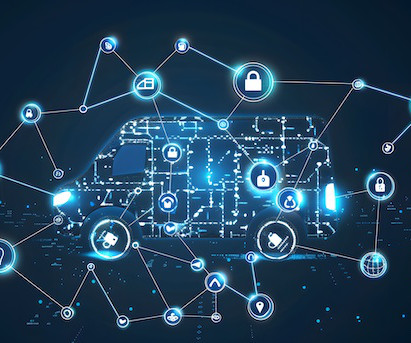
eSchool News
JUNE 21, 2024
The cybersecurity threats facing our educational institutions are significant,” said Funds For Learning CEO John Harrington in a statement. “This pilot program represents a crucial step in providing the resources necessary to safeguard sensitive information and maintain secure, reliable access to digital learning tools.

Education Superhighway
JANUARY 23, 2019
One of the most important features of E-rate is that it set an annual target of $1 billion annually to help schools upgrade their internal networks and implement Wi-Fi in every classroom. That amounts to $150 in E-rate Category 2 funding per student, to deploy a robust LAN / Wi-Fi network.

eSchool News
NOVEMBER 22, 2016
Thanks to a major funding refresh, one district found that it’s now possible to support its one-to-one initiative without scaling back access for other services or devices. And now, school districts across the nation are able to improve digital learning opportunities and expand wi-fi for teachers and students.

Education Superhighway
OCTOBER 11, 2017
Both have had long careers at Brevard and have worked closely to implement technology into the schools’ digital learning programs. Overcoming Obstacles to Digital Access. Mr. Fitzgerald saw an opportunity to plan ahead and set the schools up for future digital learning success. Shifting Their Strategy.

eSchool News
NOVEMBER 14, 2022
It comprises the whole world of computer-aided education and training, along with the use of digital tools and resources. Students learn at different rates, and from diverse ways. These tools deliver personalized learning and training that can automatically adjust to an individual’s learning competence.

Education Superhighway
NOVEMBER 27, 2017
As a result of their efforts, teachers have seen far greater opportunities to marry critical thinking with digital learning in their classrooms. Merritt solicited the support of its E-rate consultant, Julie Watson, who provided invaluable advice on how to fund an upgrade. The Path to a Successful Upgrade. The Impact.

SETDA Says
SEPTEMBER 16, 2020
SETDA and CoSN commend the Wireline Bureau for opening an emergency E-rate filing window to help schools address their higher than expected on campus bandwidth demands.

Edsurge
APRIL 4, 2019
After seven years of coordinated efforts to improve internet access in schools, thereby laying the foundation for digital learning to take root and expand in U.S. schools had gained high-speed internet access, per the Federal Communications Commission’s minimum connectivity standard of 100 kilobits per second (kbps) per student.

Education Superhighway
JANUARY 7, 2019
In the past few years, concerted efforts like E-rate modernization and various statewide initiatives have helped bring digital learning opportunities to students across the nation. Let’s look at three examples of how digital learning is changing the face of today’s classroom learning.

Education Superhighway
FEBRUARY 19, 2019
As the largest education technology program in the country, the Schools and Libraries program (E-rate) has transformed Internet access in our nation’s schools. In 2014, AASA played a lead role in modernizing the E-rate program, advocating for key changes such as: A policy update to make the program broadband-centric; and.

Edsurge
JANUARY 14, 2022
Despite being capable of working a variety of jobs, people who are blind or visually impaired tend to have low job placement rates, low salaries and an unusually high underemployment rate. But some advocates say that more-accessible tech platforms could be a key to changing that. The company, Clusive, Inc.,

Education Superhighway
AUGUST 1, 2017
Building out the infrastructure to support high-speed Internet access requires multi-layered collaboration between state and district leaders, school administrators, and service providers. students equal access to a robust, modern education, regardless of their socioeconomic background. FOUR WAYS TO IMPROVE RURAL BROADBAND ACCESS.
Expert insights. Personalized for you.
Are you sure you want to cancel your subscriptions?


Let's personalize your content